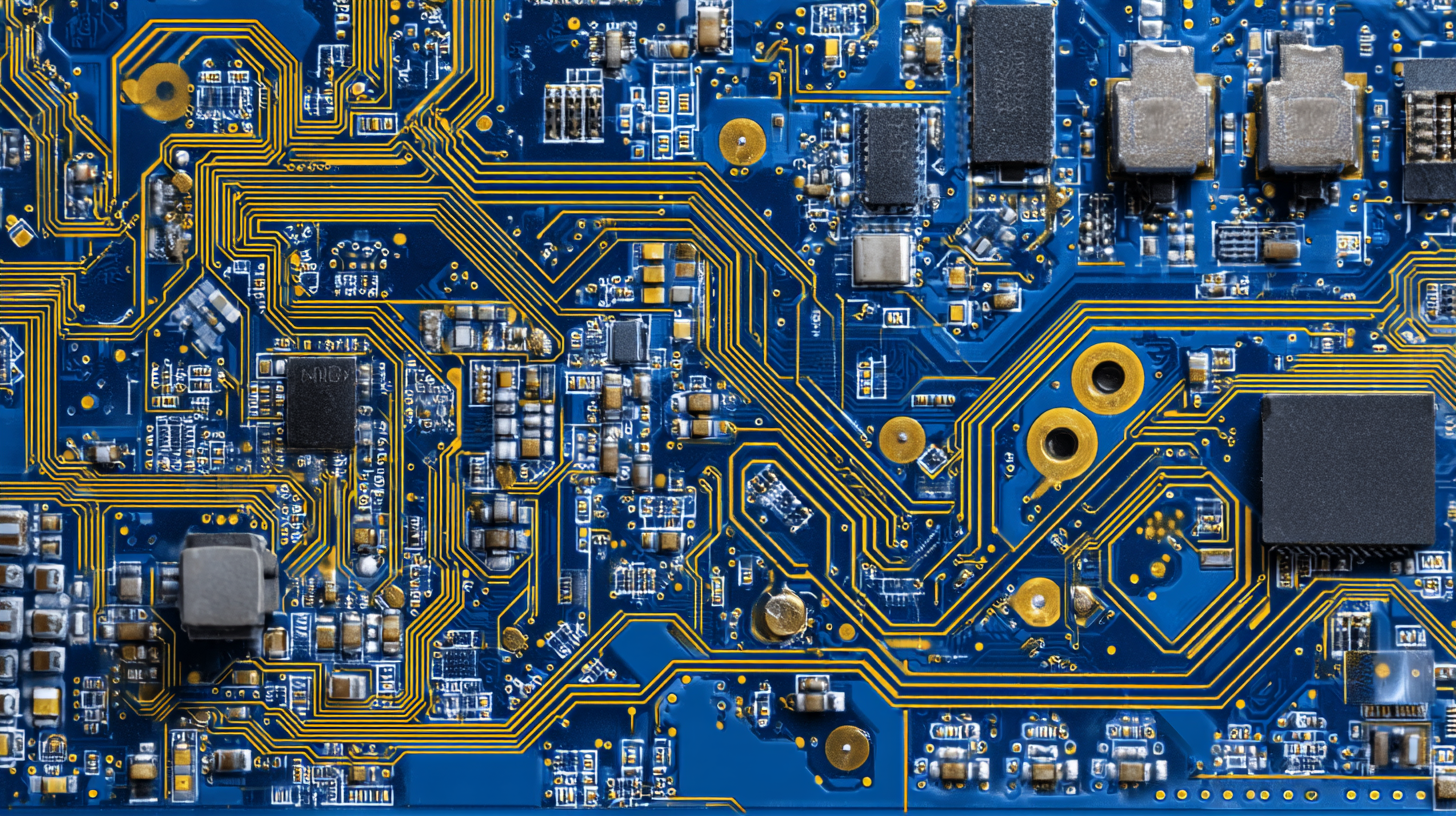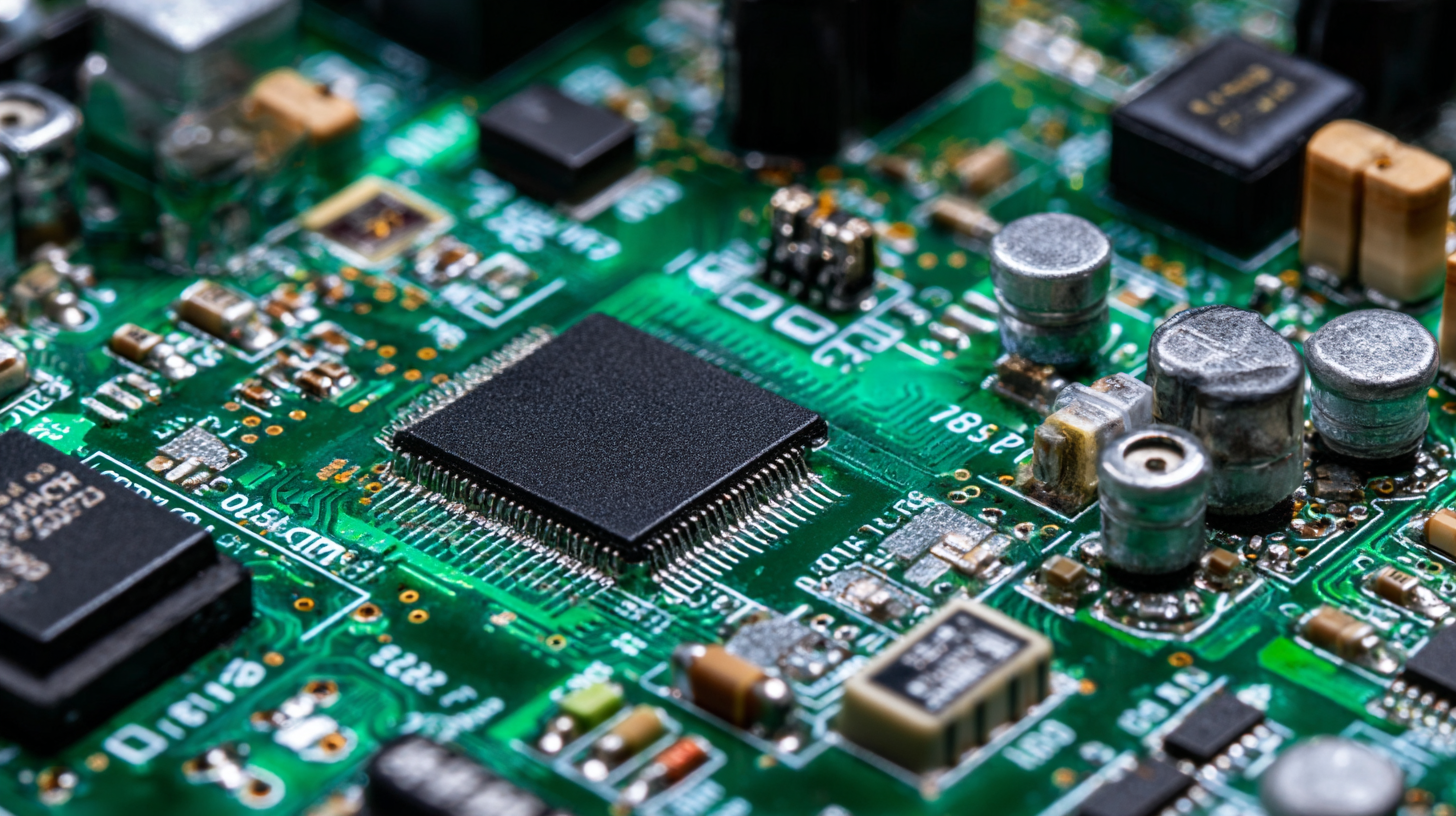JHY PCB Blog Hub
Your Source for Expert PCB Design, Manufacturing, and Assembly Insights – Stay Informed with 2025 Trends!
Choosing the Right Manufacturer for Best Flex Circuit Boards with Key Comparisons
The demand for Flex Circuit Boards has seen a significant surge in recent years, largely driven by advancements in technology and the increasing miniaturization of electronic devices. According to a report by MarketsandMarkets, the global flexible printed circuit board market is projected to reach $32.3 billion by 2025, growing at a CAGR of 10.8% from 2020. This dramatic growth highlights the critical role Flex Circuit Boards play in modern electronics, offering unparalleled flexibility, lightweight characteristics, and space-saving benefits. However, selecting the right manufacturer is essential to ensure quality and performance. With numerous options available, it is vital to compare manufacturers based on key criteria such as production capabilities, technological expertise, and customer support.

In this blog, we will explore top strategies for choosing the ideal manufacturer for Flex Circuit Boards, providing valuable insights to help you make informed decisions in a rapidly evolving market.
Understanding the Importance of Selecting the Right Manufacturer for Flex Circuit Boards
When it comes to designing and manufacturing flex circuit boards, selecting the right manufacturer is crucial for ensuring product quality and reliability. Flex circuit boards are unique due to their versatility and lightweight nature, making them ideal for various applications across industries such as electronics, automotive, and medical devices. However, the intricacies involved in their production require an experienced manufacturer who understands the nuances of flex technology. Choosing a skilled manufacturer not only affects the performance and durability of the circuit boards but also impacts the overall efficiency of the manufacturing process.
The importance of collaboration between designers and manufacturers cannot be overstated. A manufacturer with a strong track record will provide valuable insights during the design phase, allowing for optimization of the circuit boards. Their expertise can help identify potential flaws early in the process, saving both time and resources. Furthermore, a reliable manufacturer will offer quality assurance processes that comply with industry standards, ensuring that every flex circuit board meets the required specifications. In summary, the right partnership can be the key to transforming innovative designs into functional, high-quality products that stand the test of time.
Key Factors to Consider When Choosing a Manufacturer for Flex Circuit Boards
When selecting the right manufacturer for flex circuit boards, there are several key factors that businesses must consider to ensure high quality and reliability. Firstly, it is crucial to evaluate the manufacturer's experience and expertise in the field. Companies with a proven track record in producing flex circuits will often have better quality control processes, which is essential for meeting the stringent requirements of various industries, especially in the automotive sector where precision is paramount.

Additionally, the financial stability of a manufacturer plays a significant role in decision-making. According to market reports, the global flex circuit board market is projected to grow from $69.69 billion in 2023 to $113.49 billion by 2032, highlighting the increasing demand. Similarly, the automotive PCB market is expected to expand from $9.15 billion in 2023 to $15.1 billion by 2032, with a compound annual growth rate of 5.9%. Manufacturers that can demonstrate sound financial health may be better positioned to invest in the latest technologies and maintain consistent production capacities, ultimately benefiting their customers with high-quality products and dependable service.
Comparison of Leading Manufacturers in the Flex Circuit Board Industry for 2025
In 2025, selecting the right manufacturer for flex circuit boards is critical to ensuring quality and performance in electronics. With advancements in technology, manufacturers now offer a variety of features that can significantly impact production efficiency and end-product reliability. Leading companies in this industry are not only focusing on cost-effectiveness but also emphasizing innovation and sustainability. By comparing attributes such as production capacity, materials used, and technology integration, businesses can make informed decisions that align with their specific needs.

When evaluating flex circuit board manufacturers, it is essential to consider their experience and expertise in the field. Top contenders often showcase a robust portfolio of successful projects and client testimonials, which provide insights into their reliability and customer service. Moreover, manufacturers that invest in cutting-edge technology, such as automated production lines and advanced testing methodologies, can better assure product quality and consistency. Ultimately, making a well-informed choice involves a thorough comparison of these critical factors to find the ideal manufacturing partner that supports business growth and innovation.
Innovative Technologies Shaping the Future of Flex Circuit Board Manufacturing
Innovative technologies are fundamentally transforming the landscape of flex circuit board manufacturing, leading to enhanced performance and reliability. One of the most significant advancements is the integration of automation and robotics into the production process. Automated systems not only expedite manufacturing but also ensure precision in each step, reducing the potential for human error. This has become essential as the demand for smaller, more intricate designs continues to rise. Manufacturers who adopt these technologies can achieve higher throughput while maintaining quality standards, positioning themselves as leaders in the competitive market.
Moreover, the development of advanced materials plays a crucial role in shaping the future of flex circuit boards. Innovations in polymers and conductive inks are enabling the production of lighter and more flexible circuits without compromising durability. These materials allow for more complex designs that can withstand extreme conditions, making them suitable for a wide range of applications from consumer electronics to aerospace. As manufacturers embrace these new materials and techniques, they are not only improving the capabilities of flex circuit boards but also expanding their applicability across various industries, paving the way for more innovative product designs.
Choosing the Right Manufacturer for Best Flex Circuit Boards with Key Comparisons
| Manufacturer Location | Production Capacity (square meters/month) | Lead Time (weeks) | Typical Applications | Technology Used |
|---|---|---|---|---|
| North America | 500 | 4 | Consumer Electronics | Laser Cutting, Automated Assembly |
| Asia | 800 | 6 | Medical Devices | Screen Printing, High-Frequency Tech |
| Europe | 600 | 5 | Automotive Components | Flexible Coating, Hybrid Technology |
| Oceania | 300 | 3 | Telecommunications | High-Speed Manufacturing |
| South America | 400 | 4 | Wearable Technology | Thin Film Techniques, Eco-Friendly Materials |
Sustainable Practices in Flex Circuit Board Production: A Key Decision Factor
In the rapidly evolving electronics landscape, selecting the right manufacturer for flex circuit boards involves a deep understanding of sustainable production practices. Recent industry reports indicate that sustainability has emerged as a pivotal decision factor in flex circuit production. Specifically, around 70% of manufacturers are now integrating eco-friendly practices into their operations, significantly affecting material choices and waste management processes. This shift not only mitigates environmental impact but also aligns with growing consumer demand for greener products.
Moreover, advancements in lean manufacturing techniques are reshaping production methodologies. The ongoing research highlights that implementing lean principles can improve efficiency by up to 30%, ensuring that manufacturers can deliver high-quality products while minimizing waste. As companies strive for operational excellence, emphasizing sustainable practices in the manufacturing process not only enhances their market competitiveness but also fulfills corporate social responsibilities. Staying informed about these trends is essential for businesses aiming to partner with manufacturers who prioritize both quality and environmental stewardship.










